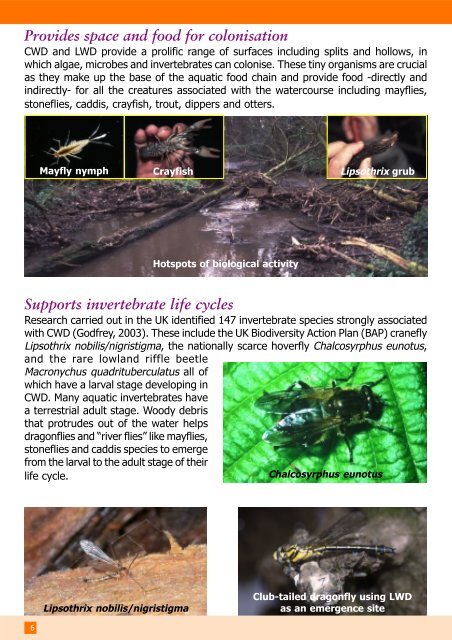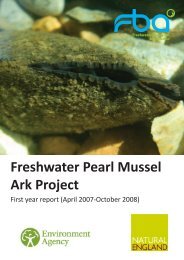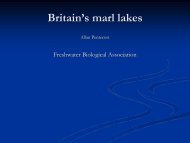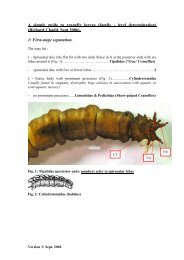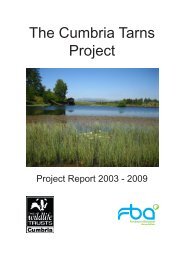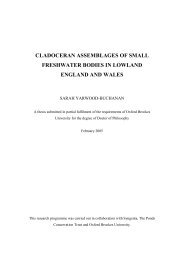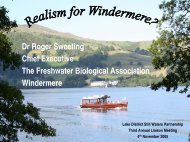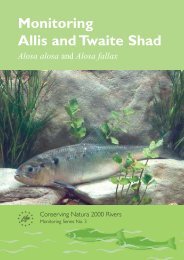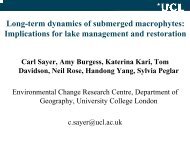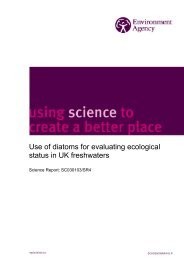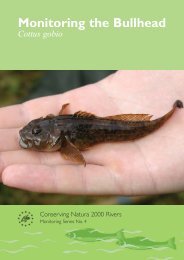Managing Woody Debris - FreshwaterLife
Managing Woody Debris - FreshwaterLife
Managing Woody Debris - FreshwaterLife
You also want an ePaper? Increase the reach of your titles
YUMPU automatically turns print PDFs into web optimized ePapers that Google loves.
Provides space and food for colonisation<br />
CWD and LWD provide a prolific range of surfaces including splits and hollows, in<br />
which algae, microbes and invertebrates can colonise. These tiny organisms are crucial<br />
as they make up the base of the aquatic food chain and provide food -directly and<br />
indirectly- for all the creatures associated with the watercourse including mayflies,<br />
stoneflies, caddis, crayfish, trout, dippers and otters.<br />
Hotspots of biological activity<br />
Supports invertebrate life cycles<br />
Research carried out in the UK identified 147 invertebrate species strongly associated<br />
with CWD (Godfrey, 2003). These include the UK Biodiversity Action Plan (BAP) cranefly<br />
Lipsothrix nobilis/nigristigma, the nationally scarce hoverfly Chalcosyrphus eunotus,<br />
and the rare lowland riffle beetle<br />
Macronychus quadrituberculatus all of<br />
which have a larval stage developing in<br />
CWD. Many aquatic invertebrates have<br />
a terrestrial adult stage. <strong>Woody</strong> debris<br />
that protrudes out of the water helps<br />
dragonflies and “river flies” like mayflies,<br />
stoneflies and caddis species to emerge<br />
from the larval to the adult stage of their<br />
life cycle.<br />
Chalcosyrphus eunotus<br />
16<br />
Mayfly nymph Crayfish Lipsothrix grub<br />
Lipsothrix nobilis/nigristigma<br />
Club-tailed dragonfly using LWD<br />
as an emergence site


